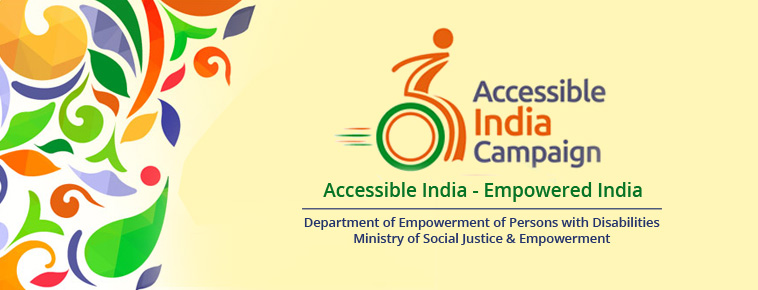From UPSC perspective, the following things are important :
Prelims level: Fatehpur Sikri
Mains level: Rights of Persons with Disabilities Act (RPWD)

Central Idea:
The article highlights the importance of accessibility and inclusion for individuals with disabilities in public spaces, using personal experiences and examples from Fatehpur Sikri, a 16th-century monument, to underscore the need for adherence to international standards and the implementation of inclusive practices across India. It emphasizes the urgent need for prioritizing accessibility in the built environment, including ramps and other accommodations, to enable full participation and empowerment of all citizens, regardless of their physical limitations.
Key Highlights:
- Personal experiences at Fatehpur Sikri illustrate the significance of proper accessibility measures.
- Lack of adherence to international standards poses challenges for individuals with disabilities in navigating public spaces.
- The Rights of Persons with Disabilities Act (RPWD) is mentioned as a framework for promoting accessibility, but implementation lags.
- Inclusive design is essential for ensuring equal access to public buildings, transport, and information technology.
- The absence of accurate disability data in India raises questions about the extent of inclusivity and the need for targeted policies.
Key Challenges:
- Inconsistent adherence to international accessibility standards in public spaces.
- Limited implementation of the Rights of Persons with Disabilities Act (RPWD) despite its enactment.
- Lack of accurate disability data hampers effective policy formulation and planning.
- Heterogeneity of disabilities poses challenges in designing inclusive solutions.
- Socioeconomic disparities contribute to unequal access to accessible infrastructure and support services.
Main Terms:
- Accessibility
- Inclusion
- Rights of Persons with Disabilities Act (RPWD)
- Universal design
- Public accommodations
- Built environment
- International standards
- Heterogeneity of disabilities
- Socioeconomic disparities
- Inclusive practice

Important Phrases:
- “International standard for a ramp slope”
- “Rights of Persons with Disabilities Act (RPWD)”
- “Universal design”
- “Built environment”
- “Socio-economic background”
- “Accurate disability data”
- “Inclusive environment”
- “Heterogeneity of disability”
- “Accessibility of public accommodations and roads”
- “Participation in civic and socio-economic life”
Quotes:
- “If a city built in 1569 AD can be made nearly 95 per cent wheelchair accessible, so can all public accommodations and roads.”
- “Only by accomplishing this can we realise the full potential of our citizenry, empowering them to actively contribute their professional expertise and diverse skills for the optimal development of the country.”
- “It is evident that our country has miles to go before genuine inclusivity can be celebrated.”
- “The absence of ramps is just one example of why the disabled citizenry often finds it challenging to fully participate in civic and socio-economic life, potentially resulting in diminished self-esteem.”
- “Every Indian deserves the freedom to experience our country’s rich history and heritage along with the rights accorded to all citizens.”
Anecdotes:
- The personal experience of the author’s brother tipping over in a wheelchair due to a steep ramp highlights the dangers posed by inadequate accessibility measures.
- The contrast between the accessible ramps at Fatehpur Sikri and the inaccessible environments encountered in daily life underscores the importance of universal design in public spaces.
Useful Statements:
- “Implementing proper accessibility measures is a cost-effective investment in enhancing accessibility for individuals with physical limitations.”
- “Inclusive design is essential for ensuring equal access to public buildings, transport, and information technology.”
- “In pursuing true accessibility, involving multiple end-users in the design process is crucial for determining its success.”
Examples and References:
- Fatehpur Sikri as an example of successful accessibility implementation.
- Comparison between international standards and the actual accessibility of public spaces in India.
- Mention of UN-Habitat’s definition of an inclusive environment.
- Reference to the Rights of Persons with Disabilities Act (RPWD) as a framework for promoting accessibility.
- World Health Organization’s data on global disability prevalence versus India’s reported disability rates.
Facts and Data:
- Fatehpur Sikri is mentioned as being nearly 95% wheelchair accessible.
- The World Health Organization estimates that 16% of the global population experiences significant disabilities.
- India’s last Census in 2011 reported only 2.2% of the population as having disabilities.
Critical Analysis: The article effectively combines personal anecdotes with broader observations to highlight the challenges and importance of accessibility and inclusion in India. It critiques the lack of adherence to international standards and the limited implementation of legislative frameworks, emphasizing the need for concrete action to address these issues. However, it also acknowledges the complexities involved, such as the heterogeneity of disabilities and socioeconomic disparities, which require nuanced approaches to ensure meaningful inclusivity.
Way Forward:
- Prioritize accessibility and inclusion as national priorities, possibly under a dedicated “mission.”
- Ensure consistent adherence to international standards in the design and construction of public spaces.
- Improve implementation of the Rights of Persons with Disabilities Act (RPWD) and enhance data collection on disability prevalence.
- Promote inclusive design practices and involve end-users in the planning and development of accessible infrastructure.
- Raise awareness and advocate for the rights of individuals with disabilities to foster a more inclusive society.
Get an IAS/IPS ranker as your 1: 1 personal mentor for UPSC 2024
